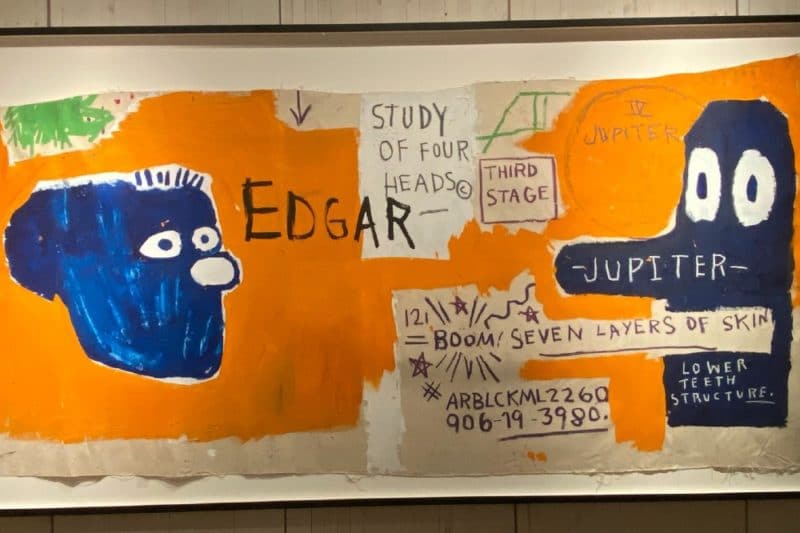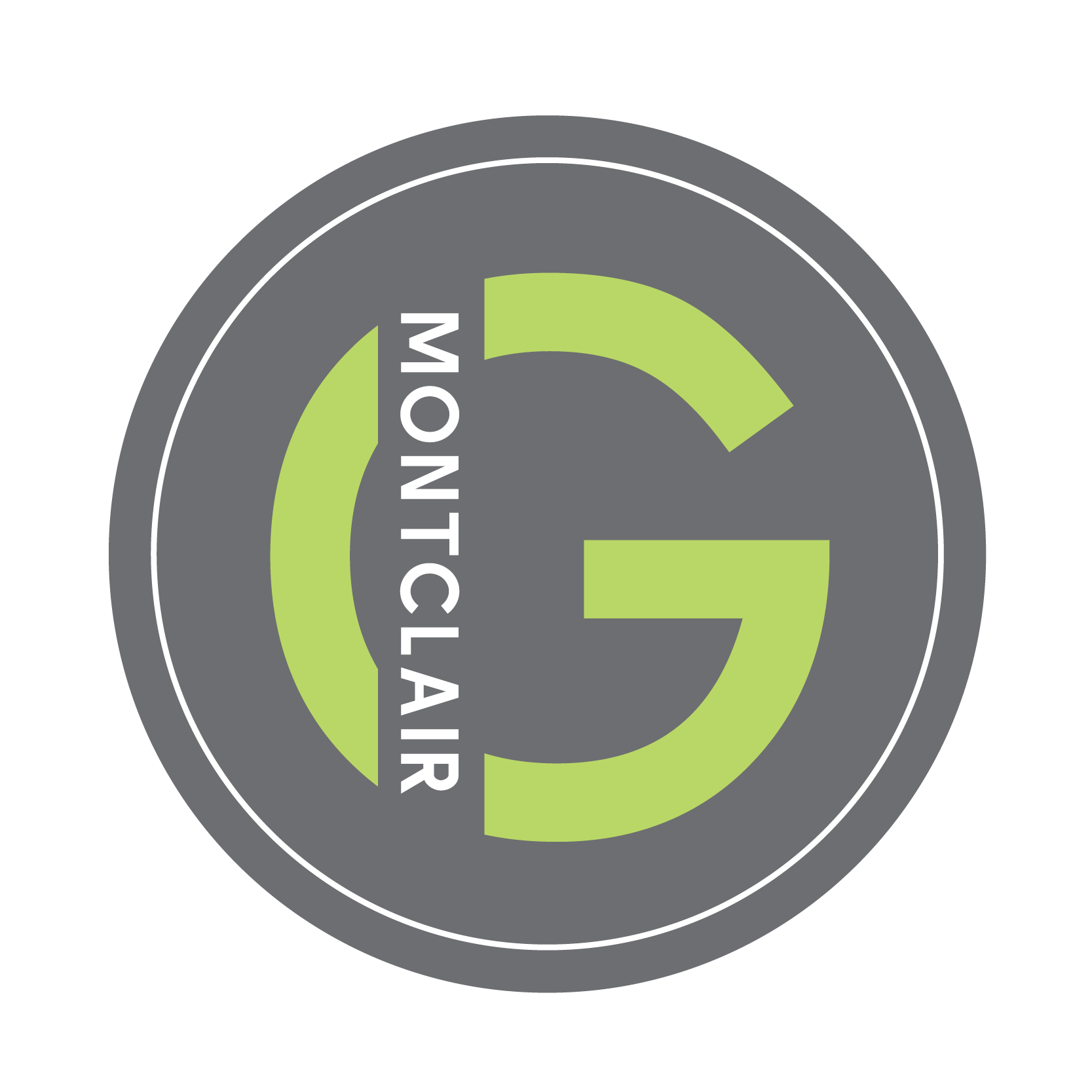For everyone looking for New York City art exhibits this summer, perhaps the most profound and important art exhibit of the year has opened just across the river in Chelsea. Jean-Michel Basquiat: King Pleasure celebrates the genius of the legendary artist who elevated graffiti to a form of high art during the formative years when rap, punk, and street art coalesced into early hip-hop culture. His subject matter delicately and abrasively showcases an extensive grappling with Art History while simultaneously casting a penetrating light into subject matters of Black identity, economic exploitation, and police brutality — which remain at the forefront of American consciousness and conversation. Read on for a look into Jean-Michel Basquiat: King Pleasure, an exhibit located at the Starrett-Lehigh building in Chelsea.
Background On This Priceless Exhibit
What makes this exhibit so extraordinary is that it was curated with the insight and priceless resources of the Basquiat family. Jean-Michel’s meteoric rise and untimely death from a heroin overdose at 27 years old make his paintings extremely coveted in the art world. Few pieces exist within one location. A single looseleaf extracted from his notebooks was auctioned for hundreds of thousands of dollars.
To put that into perspective — The Museum of Contemporary Art in Los Angeles possesses the world’s largest museum-collection of Jean-Michel works — with a grand total of 6. In other words, the over 200 never-before-seen and rarely shown paintings, drawings, artifacts, and multimedia presentations of Jean-Michel Basquiat: King Pleasure are unprecedented. Moreover, including artifacts like his birth announcement, shoes, and bicycle helps to humanize a titan. It makes real and gives flesh and blood to a seemingly ethereal art-god.
Most importantly, his family’s personal touch allows his often enigmatic paintings to be more accessible to someone who may not be entirely familiar with Jean-Michel. For example, at the exhibit’s entrance, a note from his sisters elucidates some of Jean-Michel’s multilingual wordplay — explaining that ‘Boxeo’ (in Spanish) relates to how the family gathered around a television to watch boxing with Jean-Michel’s father.
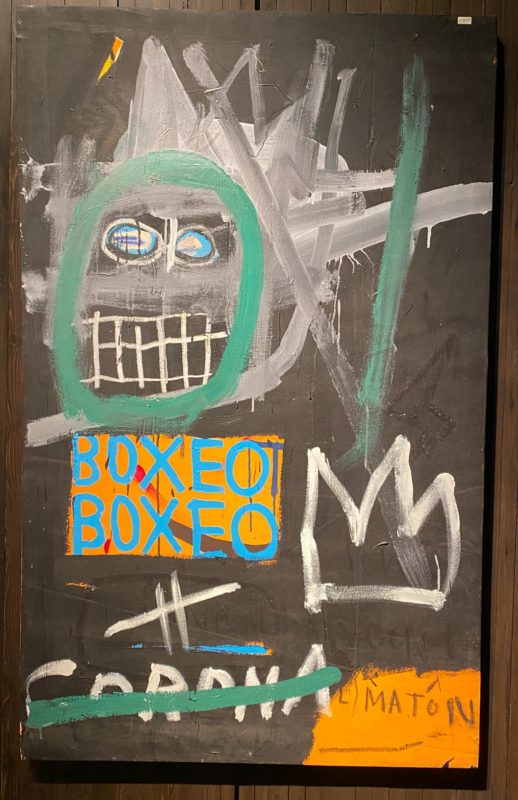
The exhibit later showcases how Jean-Michel paints such memories into manifestos of Black greatness, along with an homage to Sugar Ray and even a t-shirt which is (in line with Jean-Michel’s economic critiques) available for purchase at the end of the exhibit.
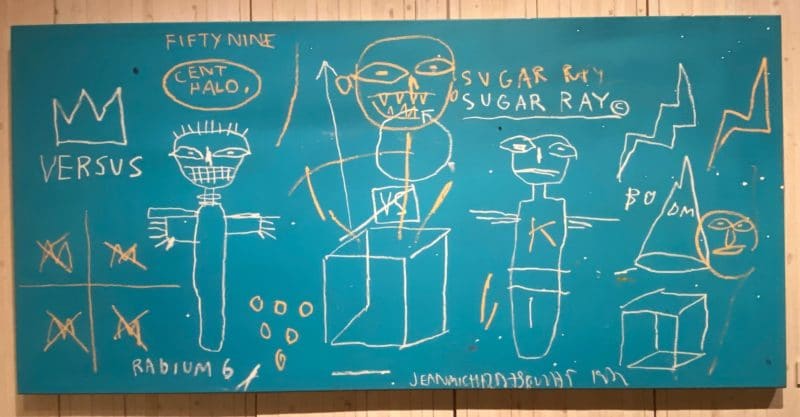
This demonstrates how a seemingly innocuous note from the Basquiat family sheds light on paintings later in the exhibit.
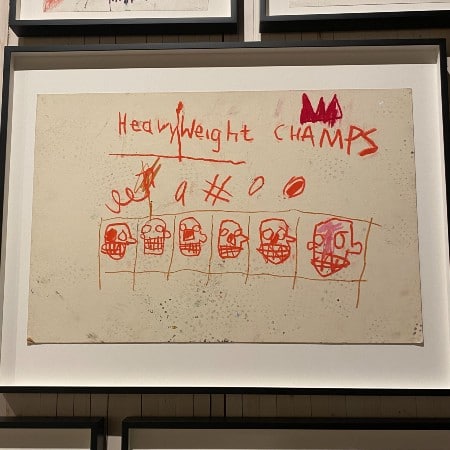
Jean-Michel Basquiat: King Pleasure goes on to present 4 especially exhilarating rooms, all curated with music to allow insight into Jean-Michel’s life while enhancing the audience’s experience and understanding.
Read More: A Look Inside the Montclair Art Museum + Everything It Has to Offer
Jean-Michel’s Childhood Home
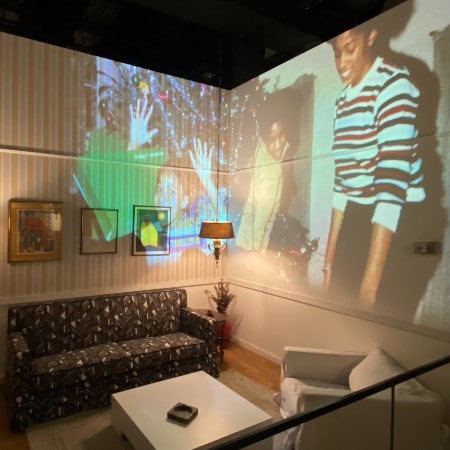
Jean-Michel’s family went through painstaking effort to recreate the interior of their childhood home. Within a bifurcated room, visitors hear a soundtrack to Jean-Michel’s youth, which helps give texture to his childhood. Intimate images and videos are projected on the wall like distant recollections imprinted on the paintings to come.
Jean-Michel’s Studio
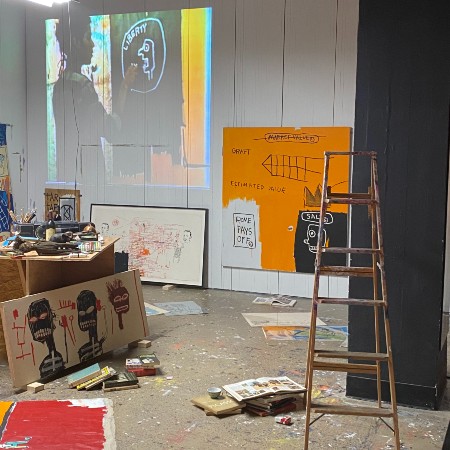
A later room recreates Jean-Michel’s studio, staged with an ashtray brimming with Marlboro red cigarette butts, his own shoes, and art pieces worth millions of dollars resplendent upon the floor alongside a television set playing VHS tapes from Basquiat’s own collection. Basquiat’s jazz records play in the background as visitors admire the controlled chaos of the room — a deliberate, new way to showcase artwork rather than just presenting pieces on walls like more typical art installations). This presentation, along with the music, allows visitors to engage with the artwork in a different way while providing a unique context in which to understand art.
The Highlight of the Exhibit
It is not an overstatement to say that the highlight of the exhibit may be the most important wall of any contemporary art exhibit in America today. This room compiles two significant artworks side by side: Untitled (Edgar) and Jailbirds.
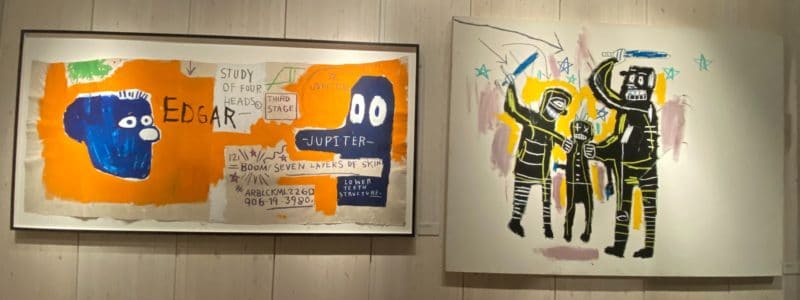
The image on the left (Untitled [Edgar]) references Peter Paul Rubens’ painting, Four Studies of a Male Head (painted circa 1617).
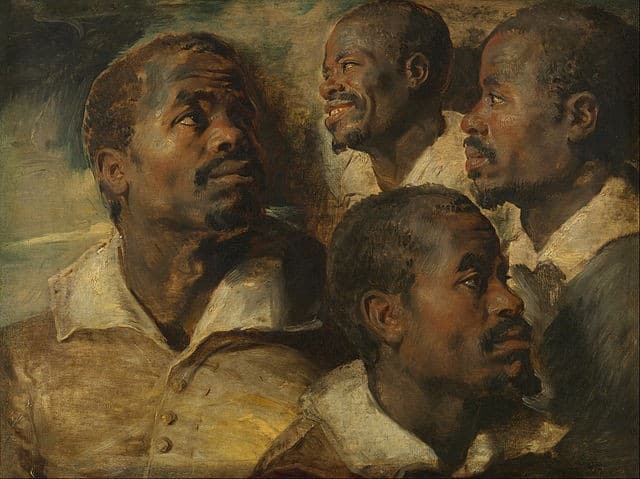
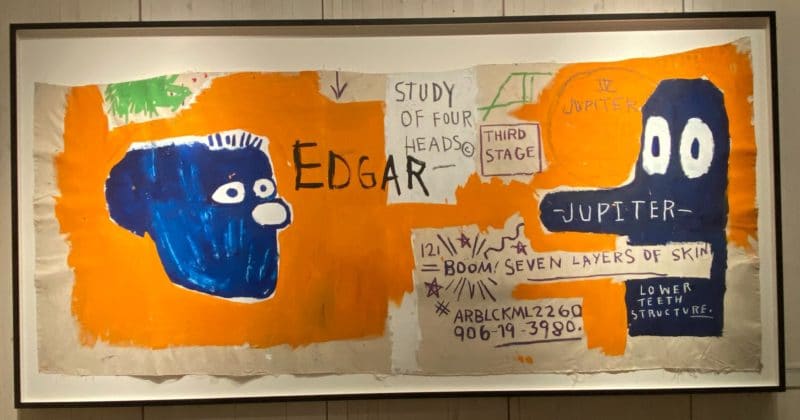
Jean-Michel not only recreates the painting in his unique, ‘Neo-Expressionist’ style, but in doing so, he asserts his agency and unique vision, defying and challenging the European colonial tradition. After 400 years, a Black man is no longer the subject but the creator. Furthermore, Jean-Michel paints himself into the piece with abstract symbols — employing a numbering system similar to those used to identify prisoners.
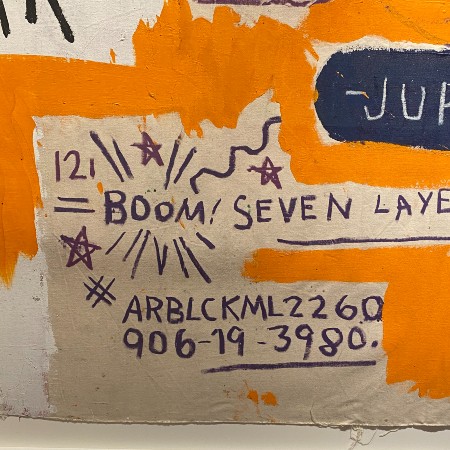
Beside Untitled [Edgar] hangs Jean-Michel’s Jailbirds, painted in 1983, depicting police brutality against a Black man.
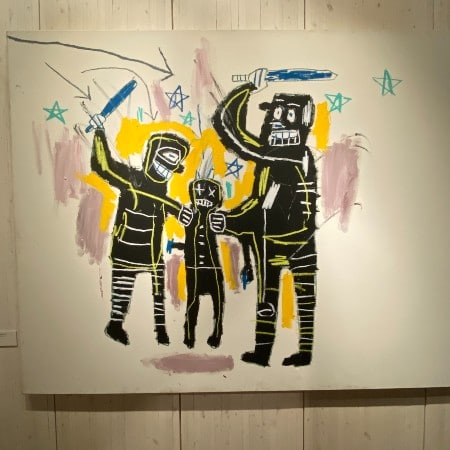
By situating these two paintings together, Basquiat’s work presents the subjugation of Black men at the dawning of the slave trade by referencing Peter Paul Rubens’ painting from 1617, juxtaposed with the contemporary racial prejudice in 1983. These themes seem commonplace today with the popularization of 1619 Project (published in 2021), but viewed side by side, spectators become awestruck by the drastic and dynamic composition and message Jean-Michel preached as early as 1983 — a message just as resonant in 2022. Taken together, the two paintings create something of a thesis from Jean-Michel, which was his intention all along.
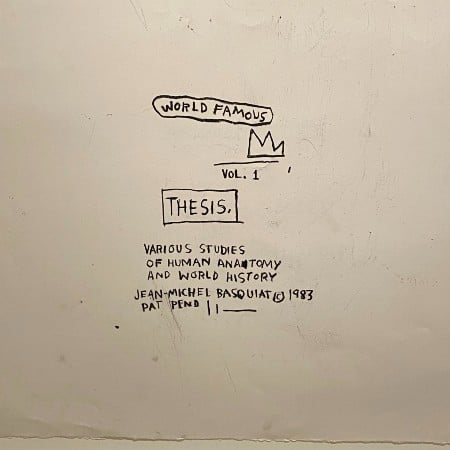
80s Glamor at the Palladium
The final room of the exhibit grants one last moment of exhilaration and reflection as visitors are offered a seat between two colossal Jean-Michel pieces which once hung in the VIP lounge at the Palladium Nightclub in 1985. A stack of televisions plays images and videos, offering glimpses into the glamorous, avant-garde, 1980s nightlife scene — all set to music which (like so much of the Jean-Michel exhibit) seems uncannily modern.
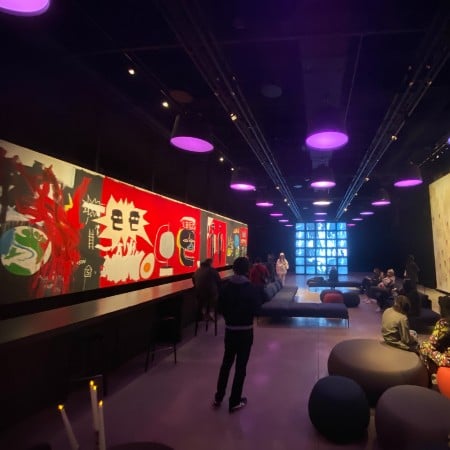
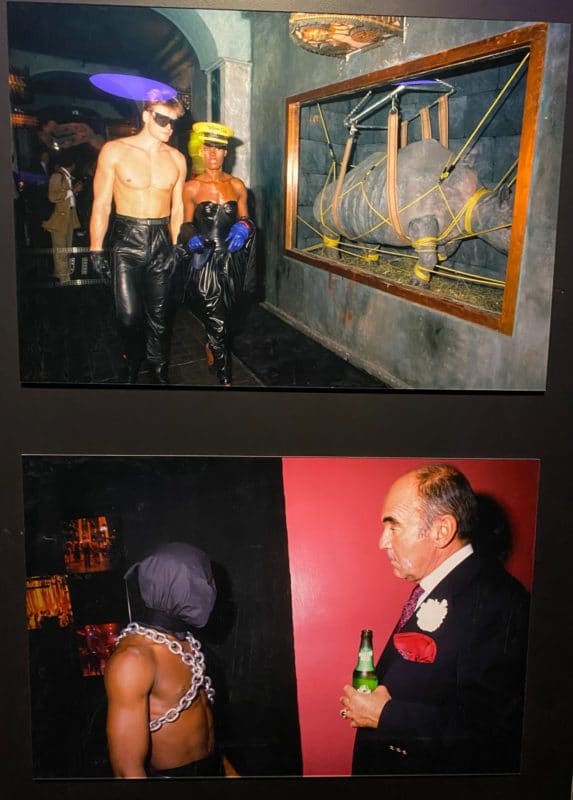
One mural in particular, NU-Nile (1985) depicts the entirety of human existence, from the Big Bang through the Nuclear and Space Ages still dependent on oil and notarized by Jean-Michel himself.
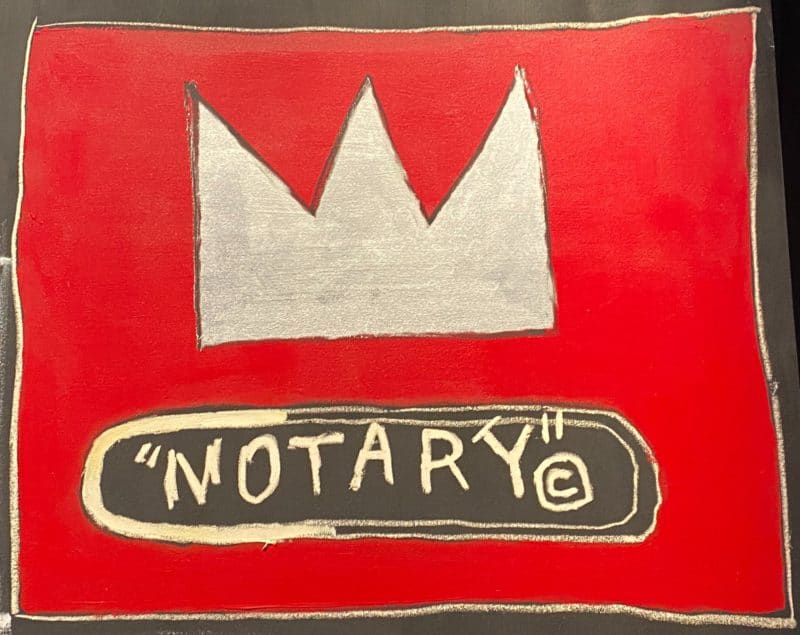
See More: This Montclair Resident Paints Lifelong Custom Memories
How to Visit the Jean-Michel Basquiat: King Pleasure Exhibit
Tickets for Jean-Michel Basquiat: King Pleasure are currently being sold until early September, but the exhibit’s popularity has prompted organizers to extend the exhibit into the unspecified future. While the exhibit’s address directs visitors to the Starrett-Lehigh Building at 601 West 26th Street, the entrance is actually on 27th Street between 11th Ave and the Westside Highway. Organizers limit crowds, and therefore a lengthy line can develop. ‘Skip The Line’ tickets are sold for $65 while regular, adult tickets run for $35. This not-to-be-missed exhibit is approximately 1 mile (a 20-minute walk) from the PATH trains at 23rd Sttrry or 33rd Street.

